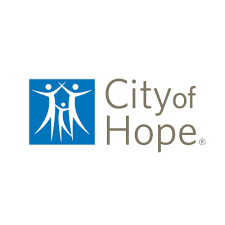Ambulatory endoscopy management strategies keep patients, finances healthy

Gastrointestinal (GI) endoscopy is one of the most common procedures in the US. Performed more than 17.1 million times per year in inpatient and outpatient hospital settings as well as ambulatory surgery centers (ASCs), GI procedures account for 68% of all endoscopies, according to a May 2022 article in Digestive…
Rural hospitals contend with challenging opportunities

Rural hospitals in the US have been facing a prolonged, multifaceted crisis. The literature presents several reasons for why healthcare facilities in rural areas struggle, including shrinking budgets, rising chronic illness and public health issues like addiction and obesity, poor telehealth and broadband access, aging populations, deteriorating mental health, and…
Study results evidence long-term effectiveness of gastric bypass surgery

Editor's Note Roux-en-Y gastric bypass surgery kept type 2 diabetes in remission for up to 15 years and maintained most of the weight loss for up to 20 years in a long-term study, according to a June 12 report in SciTech Daily. Presented the same day at The American Society…
CMS to end Change Healthcare cyberattack assistance program

Editor's Note The Centers for Medicare & Medicaid Services (CMS) has announced assistance for providers affected by the Change Healthcare cyberattack ends next month. According to the June 17 announcement, payments under the Accelerated and Advance Payment (AAP) Program for the Change Healthcare/Optum Payment Disruption (CHOPD) will end July 12,…
Study: Immunotherapy offers significant benefits for dMMR colorectal cancer
Editor's Note A pair of immunotherapy drugs administered before surgery significantly diminished tumor size without serious safety concerns in patients with mismatch repair-deficient (dMMR) colorectal cancer, according to a study published in the New England Journal of Medicine. Healthline reported the news June 8. Constituting 10-15% of cases, dMMR cancer…
Study: Liver surgery safe for outpatient settings

Editor's Note Robotic liver surgery can be performed safely as an outpatient procedure, according to findings from the City of Hope cancer research organization in Duarte, California. According to a June 10 press release, the study analyzed data of 307 patients who underwent outpatient robotic liver surgery (defined as requiring…
Study: Bariatric surgery outperforms GLP-1 treatment, lifestyle modifications

Editor's Note Bariatric surgery provides longer-lasting, more effective weight loss than GLP-1 receptor agonists and lifestyle interventions, according to systematic reviews of medical literature from 2020 to 2024. Medical Xpress reported the news June 11. Presented at the American Society for Metabolic and Bariatric Surgery (ASMBS) 2024 Annual Scientific Meeting,…
Ascension announces full EHR restoration after cyberattack disruption

Editor's Note Ascension has restored electronic health records (EHRs) throughout all hospitals and clinics nationwide, according to a June 14 update from the St. Louis-based health system. "Clinical workflow in our hospitals and clinics will function similarly to the way it did prior to the ransomware attack," the statement reads,…
Real-time mass spectrometry identifies brain cancer mutations during surgery

Editor's Note A mass spectrometry platform that identifies key brain cancer mutations in real-time during surgery shows potential for improving outcomes in a procedure when time is of utmost importance, Technology Networks reported June 3. Developed by the Mayo Clinic, the platform specifically targets dehydrogenase (IDH) mutations on samples taken…
Updated ethylene oxide sterilizer standard covers latest technology

Editor's Note The Association for the Advancement of Medical Instrumentation (AAMI) has updated its standard on ethylene oxide (EO) sterilizers for healthcare facilities, according to a June 12 press release. The first update in two decades, the fourth edition ANSI/AAMI ST24:2024 covers labeling, safety, performance, and testing requirements for general-purpose…

 Free Daily News
Free Daily News